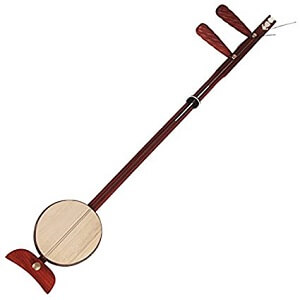Banhu
 Banhu, Wade-Giles romanization pan-hu, bowed Chinese fiddle, a type of huqin (Chinese: “foreign stringed instrument”). The instrument traditionally has two strings stretched over a small bamboo bridge that rests on a wooden soundboard. (The sound box of most other Chinese stringed instruments is covered by a snakeskin membrane.) Its two lateral pegs are situated on the same side of the peg box.
Banhu, Wade-Giles romanization pan-hu, bowed Chinese fiddle, a type of huqin (Chinese: “foreign stringed instrument”). The instrument traditionally has two strings stretched over a small bamboo bridge that rests on a wooden soundboard. (The sound box of most other Chinese stringed instruments is covered by a snakeskin membrane.) Its two lateral pegs are situated on the same side of the peg box.
The banhu developed about the 16th century, and its popularity has continued to the present day. It is a member of the modern Chinese orchestra. By the 18th century one type, the banghu, had become popular in northern China, especially for bangzi (clapper) opera, from which it takes its name.
During performance, the banhu is held in an upright position. The bow passes between the two strings, its threads held taut by the performer’s hand, and bowing is done close to the top of the semicircular resonator, which is made of wood or coconut shell. Soprano, alto, and tenor versions of the banhu are available. Possessing a high-pitched and penetrating tone, the banhu has a range of more than two octaves, and performance technique is characterized by frequent use of rapid separate bowing and glissandos.